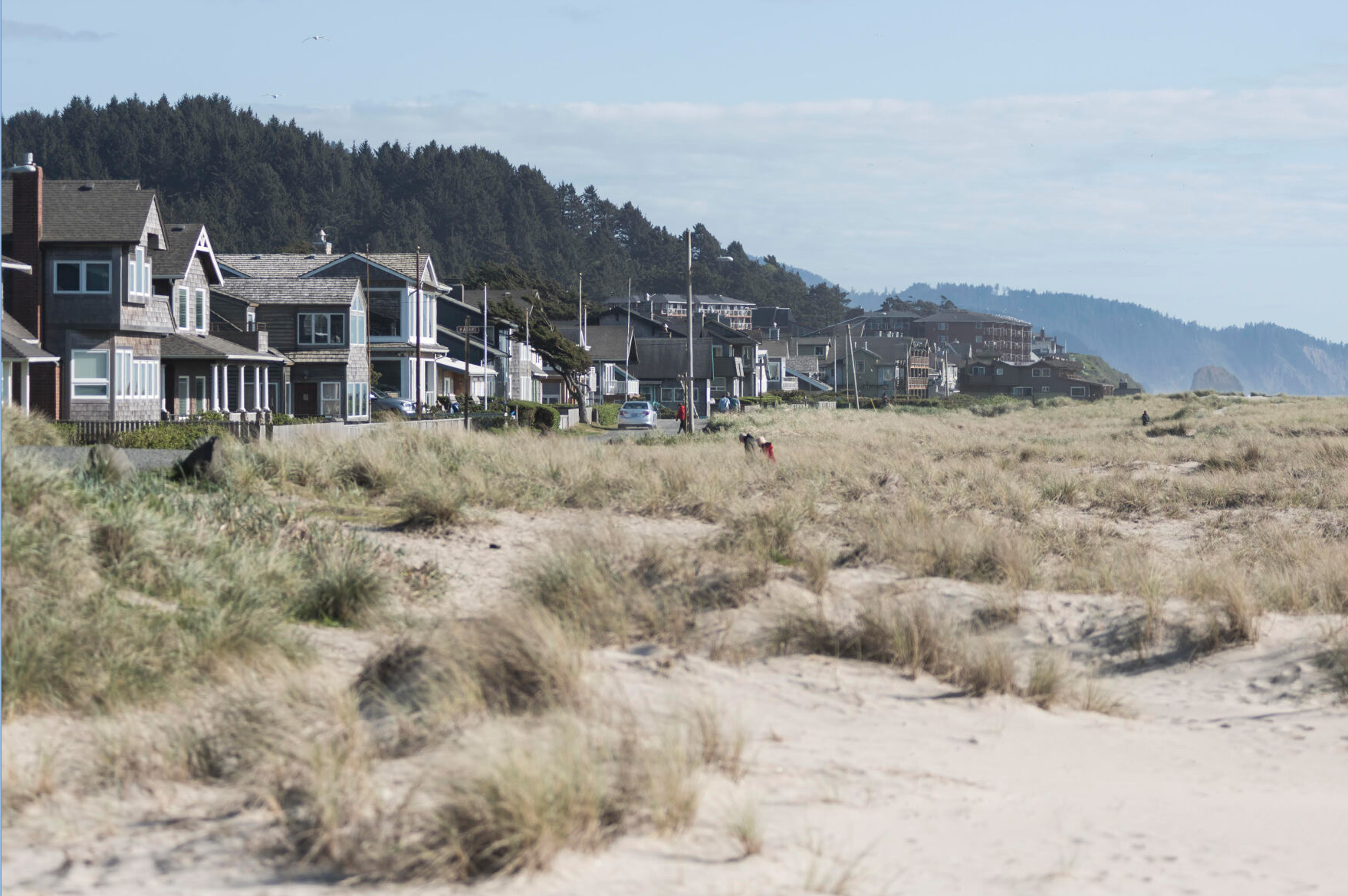Water Under the Bridge: Jan. 7, 2025
Published 12:15 am Tuesday, January 7, 2025

- 1975 — The Star Boxford was lashed down and made ready for departure to Barcelona, Spain, after taking on a load of lumber.
10 years ago this week — 2015
Volunteers Cilla and Jim Border stood bundled up on a subfreezing Wednesday morning at Ecola Point, their eyes and binoculars scanning the western horizon as they looked for small white plumes of spray from gray whales migrating south miles out amid the blue vastness of the Pacific Ocean.
Visitors straggled in, and the Borders jumped to help them watch one of the largest, longest migrations in the world.
The Borders, who hail from Netarts and have been traveling from Cape Lookout to Cannon Beach, are two of more than 200 volunteers the Oregon Parks and Recreation Department recruited and stationed at 25 sites along the Oregon Coast, Cape Disappointment, Washington, and Crescent City, California, for Whale Watching Spoken Here, the semiannual state promotion to get people out to the parks and looking for whales.
Whale watchers spotted more than 1,900 whales between Saturday and Wednesday, when the event, centered on the peak season of the southward migration, ended.
The temperature outside was a little chilly, but it was plenty warm inside the Brick House Wednesday night.
It seems like Clatskanie vs. Knappa — in any sport — always seems to heat things up.
And in a knock-down, drag-out contest, Knappa beat the Tigers — again — 62-60 to win the boys championship game of the Vince Dulcich Tournament.
Knappa’s Tyson Burnard went coast-to-coast with eight seconds left in regulation and banked in a runner with 1.4 seconds on the clock to give the Loggers the win.
Wayne W. said he would probably have spent the past few wintry nights sleeping in a pup tent outside if not for the new Astoria Warming Center, a temporary night shelter meant to fill a gap in social services for the homeless and needy.
Homeless for the past several months, he described himself as a 60-year-old disabled U.S. Army veteran muddled after a personal loss. He said he has a line on a place to live soon, but Tuesday night, when temperatures fell below freezing, he was among more than a dozen people who took advantage of the makeshift shelter at the Astoria Senior Center.
Electronics were the craze in the late 1970s, early ’80s when he went to college, said Thad Nolan, 53, who earned an associate’s degree in electronic engineering from Clatsop Community College.
But computer skills weren’t such a sure thing in the job market. He’s been doing mechanical work since his first job as a 14-year-old at a service station.
“And lo and behold the cars went computerized,” said Nolan, who has worked in the auto field for nearly 40 years and as an adjunct instructor at the college for the last decade.
His last day at Warrenton Kia was Wednesday. Today he becomes the lone full-time instructor for the college’s automotive program, showing students how intertwined electronics and automotive are.
It was a remarkable sight: a herd of elk plunged into the Columbia River for a swim. JoAnna Dotson of Astoria captured the scene on Saturday in Warrenton and watched as the powerful beasts swam before coming to shore near Hammond.
50 years ago — 1975
Inflation and voter reaction to the increasing cost of living combined to produce the main story in South County cities in 1974.
Cities were hit hard by double-figure inflation that toppled already lean and precariously balanced budgets.
Inflation also hit South County residents’ pocketbooks. Everything cost more each week — from food to gasoline, lumber to clothes.
Budget officials in Seaside, Gearhart and Cannon Beach used federal revenue-sharing monies to ease the money crunch. Seaside even was able to balance its 1974-1975 budget with the federal aid.
It wasn’t a gimmick, sale or promotional event, but Rob’s Restaurant in Seaside served free coffee all day Thursday.
And some of the lucky ones probably received free cigars along with the coffee from Rob himself.
Rob Nicholas and his wife, Janice, owners of the restaurant, are the proud parents of Clatsop County’s first 1975 baby.
Mayor Harry Steinbock presided over the last session of the 1974 Astoria City Council Tuesday morning at breakfast in the Fiesta Restaurant.
It was the end of 16 years of Steinbock’s leadership, and the two new men who will take over from Steinbock and outgoing City Councilman Sven Lund were in attendance.
The outgoing mayor, the city manager and two councilmen who will remain in office met with new Mayor Bob Chopping and new City Councilman John Hickman, to get them acquainted with the state of city government.
1974 provided more evidence to support the observation that Astoria and Clatsop County produce more news per capita than anywhere else in Oregon.
Time after time stories emanating from this area were carried by the Associated Press and published in other newspapers either because of their statewide news significance or because of their unusualness.
Leading the list of top stories this year was the continuing controversy over the proposed AMAX aluminum plant in Warrenton.
It wasn’t a new story. It has been going on for some time and has been the top news story in previous years. But the controversy grew more intense during the last year as AMAX solidified its plans to build here and opponents resolved to prevent it.
The year started out bright for AMAX as the company announced it could meet Oregon’s new aluminum plant air emission standards, which just a few months earlier AMAX officials had called impossible technologically to achieve.
Then came a hearing in October in Astoria attended by some 700 persons, mostly opponents.
75 years ago — 1950
The new year, 1950, came in with a wintry blast in the lower Columbia Sunday, producing 4 inches of snow in Astoria and a 26-degree minimum temperature Sunday night.
Snow flurries prevailed all through Saturday night and Sunday, coating streets and roads and keeping city and state workers busy around the clock sanding and clearing roads
Kids who got sleds for Christmas got a fine chance to try them out.
Point Adams and Cape Disappointment Coast Guardsmen spent New Year’s Day rescuing three distressed boats.
Cape Disappointment’s 36-foot lifeboat, sent to rescue a swamped 36-foot troller aground on the shores of Fray’s Bay, had to wait through two tides before it could tow the vessel 14 miles to Ilwaco Sunday night.
Winter’s icy fingers relaxed their grip on the lower Columbia region for a few hours Tuesday evening, then grabbed tight again with an icy clasp.
Temperatures rose above the freezing point from 5 in the afternoon until about midnight, with intermittent rain turning the snow to slush.
Then dark skies cleared, a cold moon beamed out, and the slush turned to ice that continued through today, with prospects for continued cold tonight and winds shifting into southwest late Thursday.
WARRENTON — Robert Warren suffered three wounds from fragments of a bullet he shot at a target here Wednesday.
Warren and friends were engaged in target practice in the backyard of the R.C. Davis home, using a heavy steel plate as a target.
Warren fired his .30-06 rifle at the target, the bullet shattered and three pieces rebounded, hitting Warren. One hit his cheek, one his ear and one his left hand. A surgeon had to remove all three fragments.
More men were out of work in Clatsop County this week than ever before.
Some local officials saw no hope for improvement. Others indicated the condition is a normal seasonal slump.
The county welfare commission Wednesday restated its call for a public works program to provide jobs here — jobs to be financed, apparently, by state funds.
Guy Barker, manager of the state unemployment office, said the jobless total here is higher even than during the Depression of the 1930s.
During the first three days of this week, 2,273 residents presented their claims for unemployment insurance at the state service office.
At least another 1,000 are jobless but not eligible for state insurance benefits, Barker said. About five families a week, who are drawing compensation, are abandoning the effort to find work here and are moving out of the county.
“Most of these unemployed are not wives who formerly worked in canneries,” Barker said. “Most of them are men, the heads of families. They don’t want to be supported, they honestly want work.”









